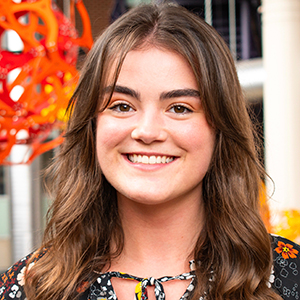Small protein plays a big role in viral battles
Extracellular vesicles, or EVs, play an important role in communication among cells. Almost all cells can release EVs, which carry content that varies according to the cell type. In response to viruses, immune cells will release EVs containing information that can help the body fight viral replication and infection. But what happens when a complex pathogen hijacks this system?

Luis daSilva’s research group at the University of São Paulo in Ribeirão Preto studies the endomembrane system of cells with particular interest in the molecular mechanisms of human immunodeficiency virus, or HIV. Viruses can take advantage of this system and impair the immune system’s ability to prevent infection. Researchers have thoroughly studied and characterized HIV’s specific proteins, and they recognize HIV accessory proteins as important virulence factors for HIV-1 pathogenesis.
In a recent paper in Molecular and Cellular Proteomics, the daSilva group writes about their work studying the HIV accessory protein negative regulatory factor, or Nef, in the context of EVs. Nef allows easier viral replication and spread in host cells, and it also modifies the host’s EVs. The authors investigated the impact of this manipulation by Nef through a proteomic analysis of EVs derived from lymphocytes known as T cells.
Mara Elisama da Silva Januário is the first author of the paper. “Our study unveils the influence of Nef on the protein content of EVs released from T lymphocytes, cells that play a major role in the body’s defense,” she said. “Our recent findings highlight Nef as a global modulator of EV proteome.”
Specifically, Nef downregulates proteins in EVs that are important in the body’s antiviral response to HIV-1, including interferon-induced transmembrane proteins, or IFITMs. When IFITMs are reduced in EVs, key antiviral activities are mitigated. These proteins are among several whose expression is disrupted by Nef in HIV-1 infection.
The researchers found that Nef could modify the levels of more than 35% of the proteins identified in EVs, and among the decreased proteins were three members of the IFITM family. These proteins are pivotal in the body’s antiviral response against viruses including Zika, dengue, influenza and HIV.
“By decoding these intricate cellular dialogues, our work contributes a small but significant piece to the broader narrative of scientific discovery surrounding HIV-1 infection, offering potential avenues for advancements in medical interventions,” da Silva Januário said.
Unraveling the biological significance of altered proteins in EVs in relation to viral infection and replication are important next steps, she said. “We anticipate that further exploration in this direction will provide valuable insights for the field, shedding light on the intricate processes influenced by Nef and contributing to a deeper understanding of the broader implications for viral dynamics.”
Enjoy reading ASBMB Today?
Become a member to receive the print edition four times a year and the digital edition monthly.
Learn moreGet the latest from ASBMB Today
Enter your email address, and we’ll send you a weekly email with recent articles, interviews and more.
Latest in Science
Science highlights or most popular articles

Bacteriophage protein could make queso fresco safer
Researchers characterized the structure and function of PlyP100, a bacteriophage protein that shows promise as a food-safe antimicrobial for preventing Listeria monocytogenes growth in fresh cheeses.

Building the blueprint to block HIV
Wesley Sundquist will present his work on the HIV capsid and revolutionary drug, Lenacapavir, at the ASBMB Annual Meeting, March 7–10, in Maryland.

Gut microbes hijack cancer pathway in high-fat diets
Researchers at the Feinstein Institutes for Medical Research found that a high-fat diet increases ammonia-producing bacteria in the gut microbiome of mice, which in turn disrupts TGF-β signaling and promotes colorectal cancer.

Mapping fentanyl’s cellular footprint
Using a new imaging method, researchers at State University of New York at Buffalo traced fentanyl’s effects inside brain immune cells, revealing how the drug alters lipid droplets, pointing to new paths for addiction diagnostics.

Designing life’s building blocks with AI
Tanja Kortemme, a professor at the University of California, San Francisco, will discuss her research using computational biology to engineer proteins at the 2026 ASBMB Annual Meeting.

Cholesterol as a novel biomarker for Fragile X syndrome
Researchers in Quebec identified lower levels of a brain cholesterol metabolite, 24-hydroxycholesterol, in patients with fragile X syndrome, a finding that could provide a simple blood-based biomarker for understanding and managing the condition.

